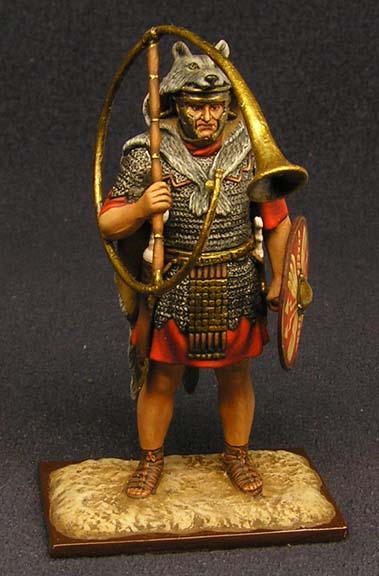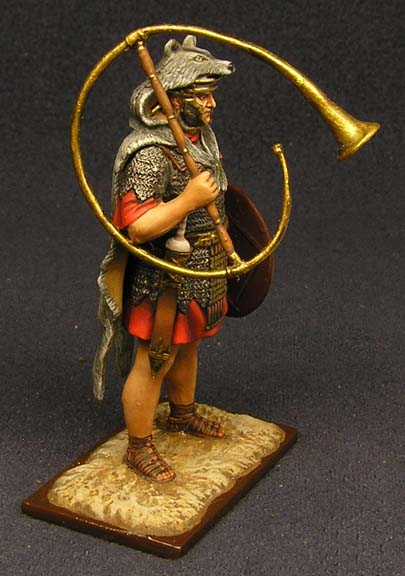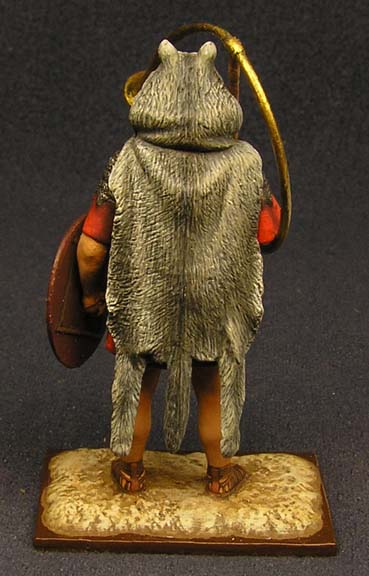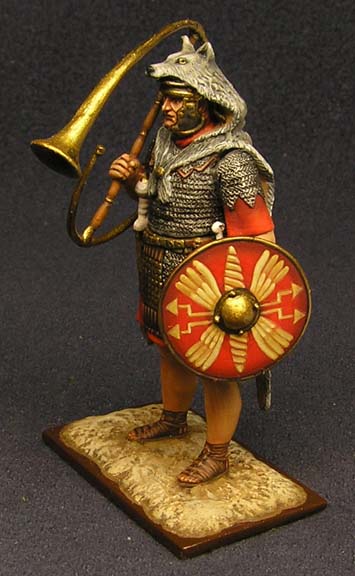X Legion Cornicen


In the Roman Army command and control structure there were three elements; Voice (centurions), Musicians and unit standards. Each century had a standard which displayed the units identification. Additionally the unit standard would include the unit's awards and battle honors (philarae) posted on the standard staff. The junior officers who carried the standard were called signifers. All the standard bearers wore animal skins over their armor to differentiate them.
The image of the emperor (imago) was carried by the Imaginifer. When units of a legion would serve on detached duty with other legions their legion flag (vexilla) would be carried by their signifer. Legion duties or calls to arms would come from the musicians (cornicen) on their horns, with specific instructions subsequently issued by the centurions. While not as great a disgrace as the loss of an eagle, the loss of a unit standard brought substantial dishonor to a unit. Legionnaires would put their lives on the line to protect the standard.



 Up
Up